How to Install Wordpress on Mac Using Xampp
Themeisle content is free. When you purchase through referral links on our site, we earn a commission. Learn More
Want to install XAMPP and WordPress – aka. install WordPress locally? This is a great idea if you want a development site that can be used for testing or other purposes. XAMPP lets you run a website from your very own computer. And once you get it set up, you can spin up a new WordPress install with just a few clicks.
But to actually install XAMPP and WordPress can be a little tricky, so you might need a helping hand.
We've already talked about some of the benefits of a local WordPress testing site, so I won't belabor that point. Instead, I'm going to assume you're just here for the guide.
Here's exactly how to install WordPress locally with XAMPP. At the end of this, you'll have your very own local WordPress testing environment running on Windows.
⚡ Pro tip:
If what you're really looking for is how to roll out WordPress for a live site, then maybe consider going straight to a host like Bluehost and let them handle the technical setup. Bluehost is a web hosting firm. The way this works with them is that you select a hosting plan that fits your needs (most of the time it's going to be the cheap plan at $2.75 / month), and then select the option to have WordPress installed on your setup automatically.
💡 Note:
If you need a more general guide on installing WordPress in other environments – not just locally, but on live servers as well, then please hop over to How to Install WordPress: a complete beginner's guide.
Step 1: Download and install XAMPP on your computer
The first step on your way to install WordPress locally is to download and install the XAMPP software. You can download the Windows installer file from Apache Friends. It's a big file, about 110 MB, so it might take a minute or so depending on your connection:
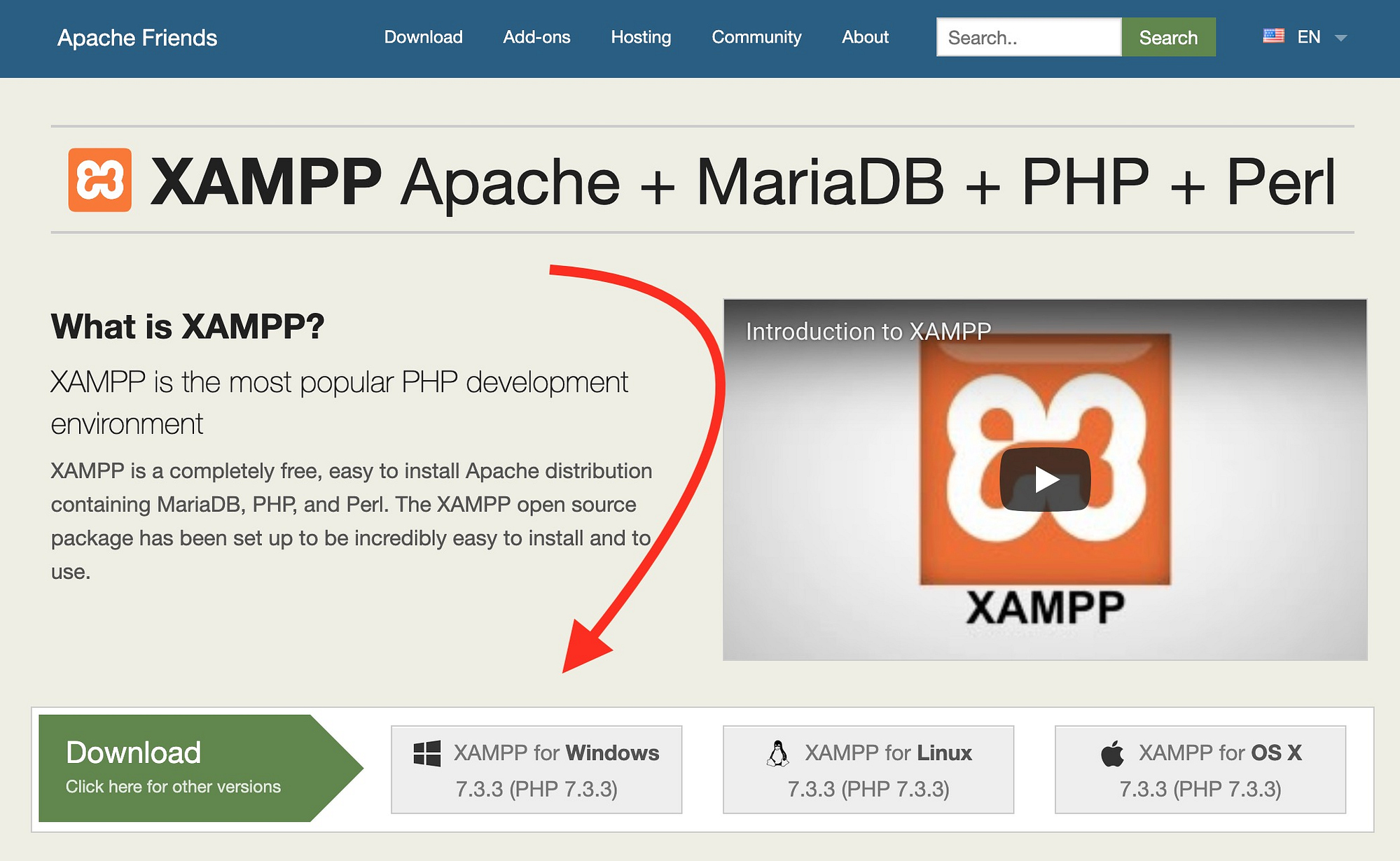
Once the download finishes, run the file you downloaded to launch the XAMPP installer. If you're running antivirus software, you might get a warning like this:
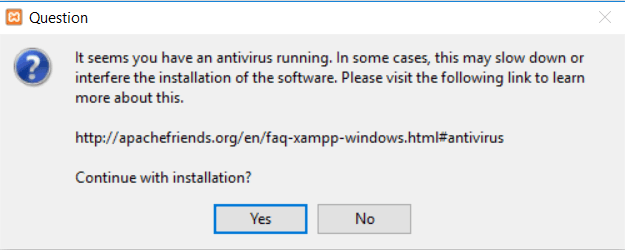
Just click Yes to continue. Depending on your Windows configuration, you might also get a prompt about User Account Control (UAC). Just continue through that prompt as well. Once you get through all of the prompts, you should see the standard installer screen:
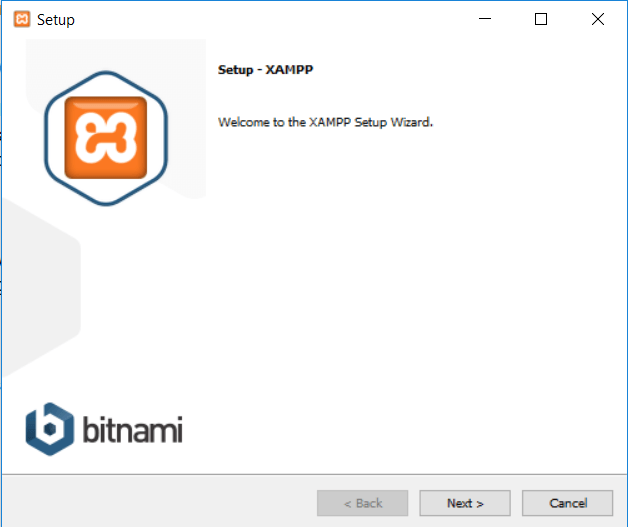
Just click Next to continue.
On the next screen, you can choose which components to install. To install XAMPP and WordPress, you do not need all of the components. In addition to the required components, all you need are:
- MySQL
- PHPMyAdmin
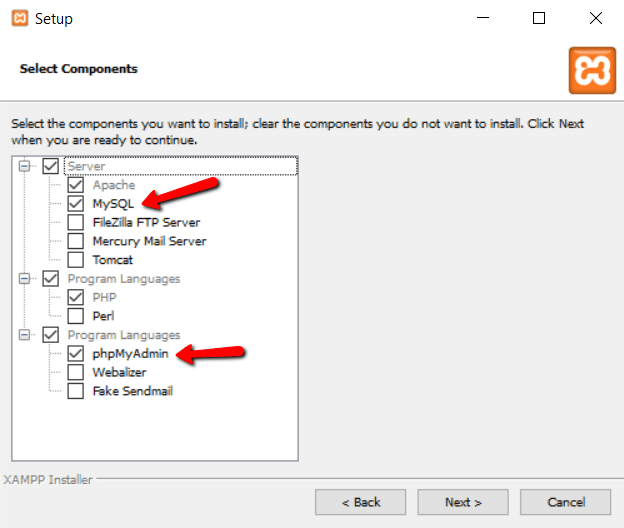
Again, this is all that's needed to install WordPress locally. Uncheck everything else and click Next.
You can now select which folder to install XAMPP in. I always leave it as the default:
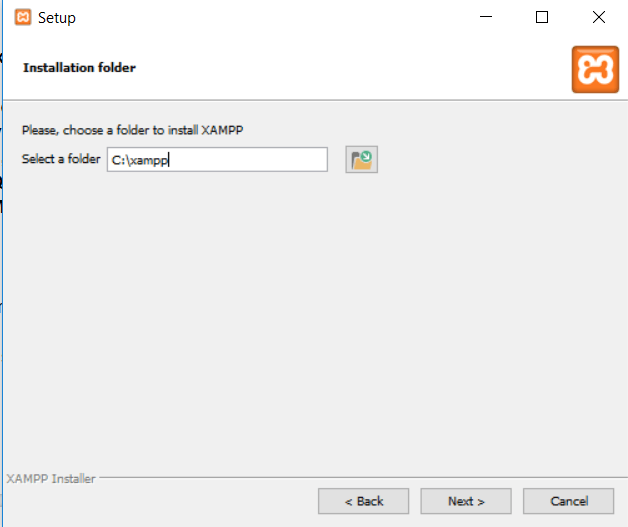
On the next screen, you'll get a prompt asking you to install Bitnami for XAMPP. You do not need this to install XAMPP and WordPress, so just uncheck the box:
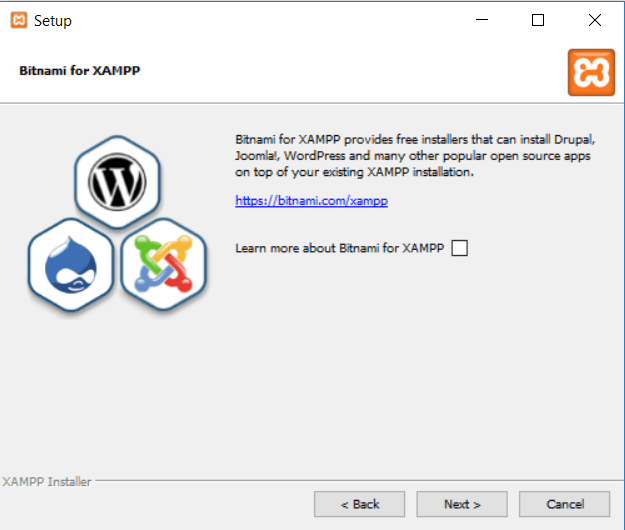
Once you click Next, you're ready to run the install:
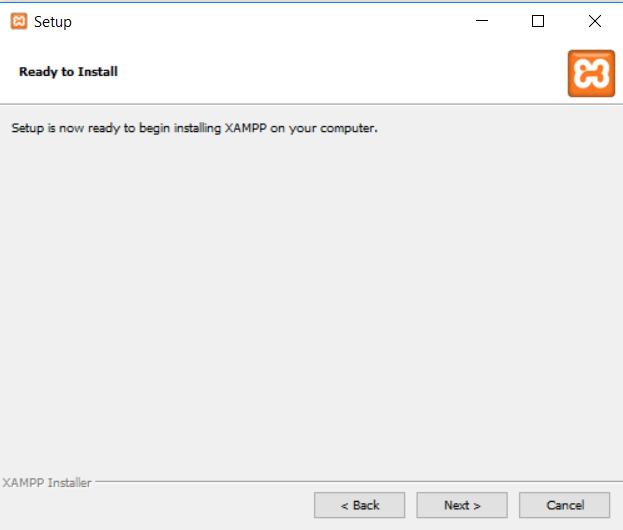
The install process might take a few minutes:

Once it finishes, you can launch the control panel to start working with XAMPP:
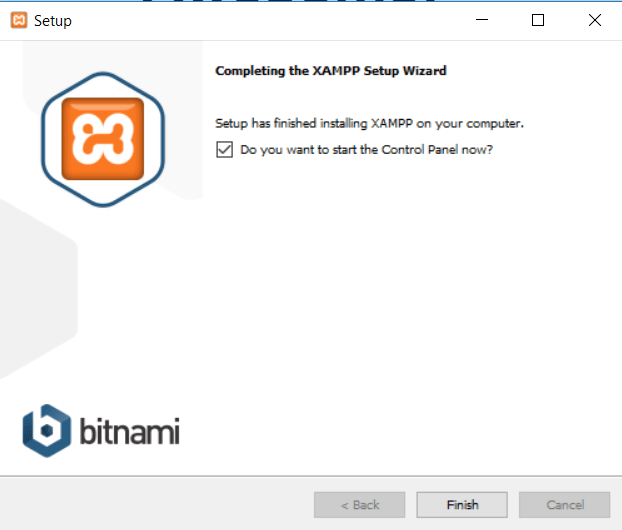
Step 2: Start the modules and test your server
To install XAMPP and WordPress properly, you'll need to run two modules:
- Apache
- MySQL
You can start both modules from the XAMPP control panel:
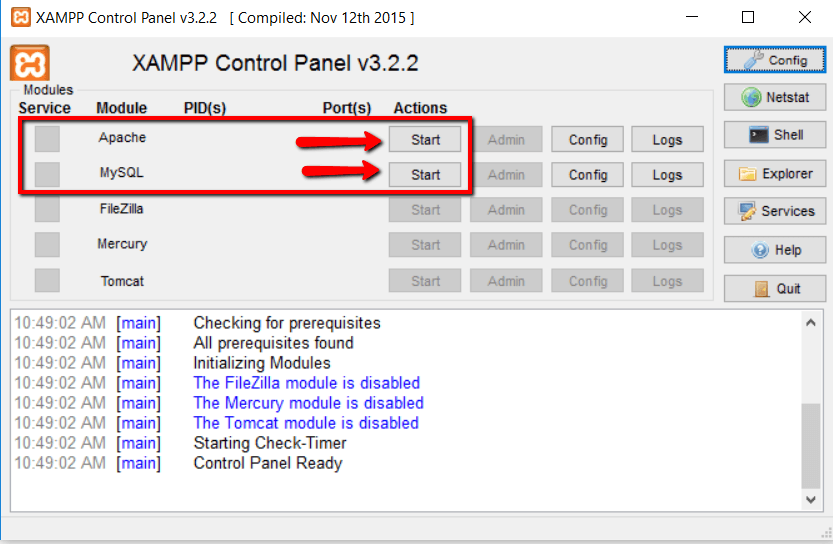
Once you launch them, you should see their status turn to green:
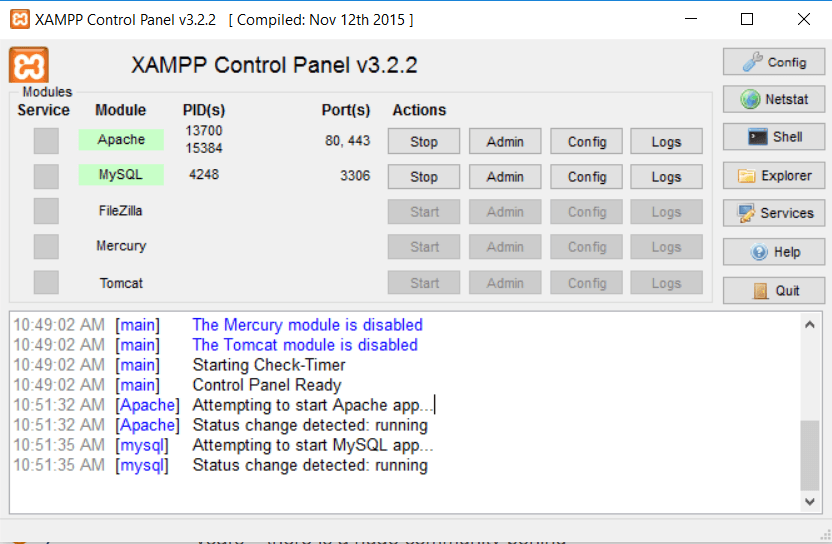
And now you should be able to test that your local server is working by going to http://localhost/ in your web browser of choice:
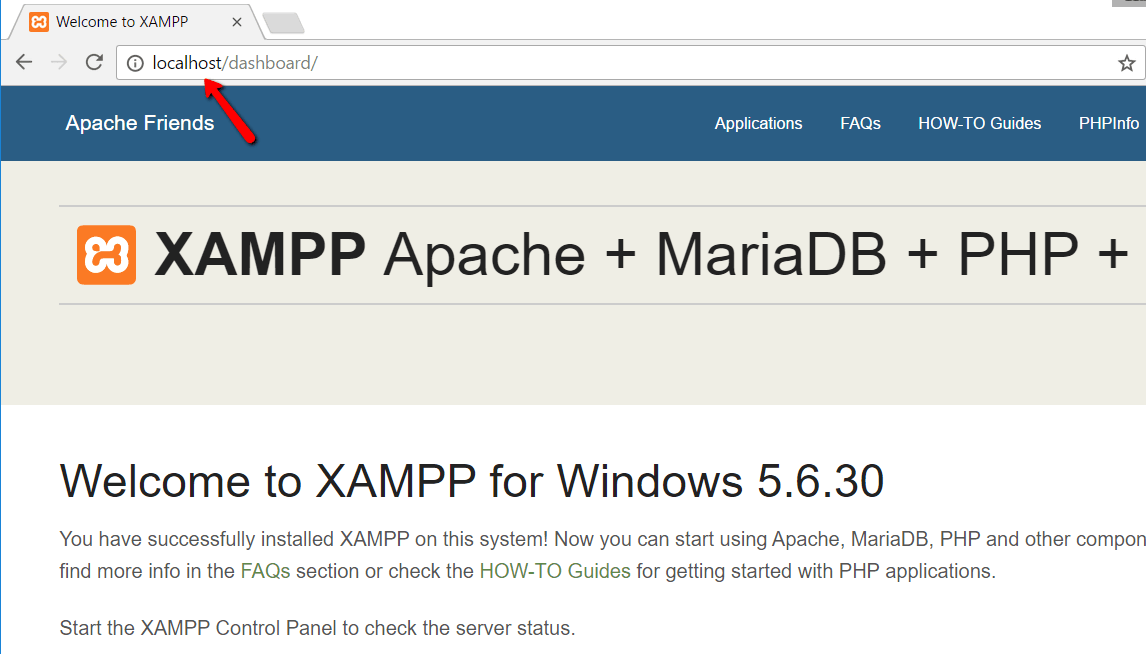
If all went well, you now have a functioning XAMPP server on your Windows PC! But now it's time to install XAMPP and WordPress. So here's how to get a WordPress site up and running on XAMPP.
Step 3: Add the WordPress files
If you've ever manually installed WordPress, the rest of the process should feel pretty familiar. First, you need to go to wordpress.org and download the latest version of WordPress.
Then, in Windows, navigate to the folder where you installed XAMPP. For me, that's C://xampp. It should be something similar for you. Then, in that folder, find the htdocs subfolder:
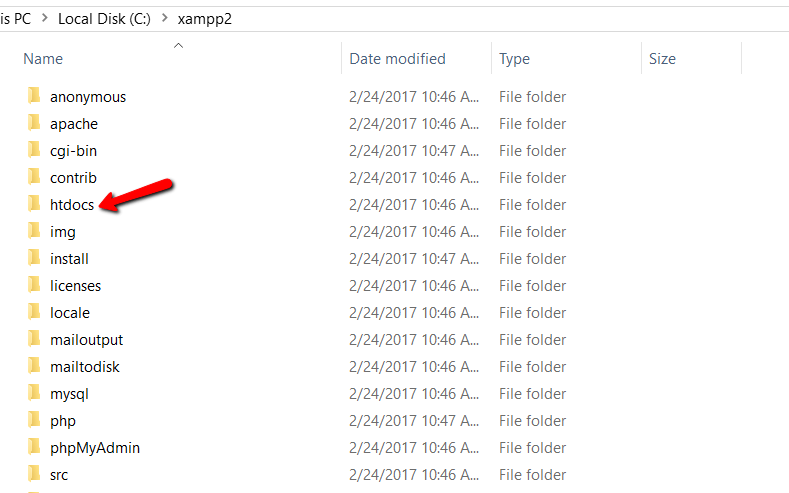
In htdocs, create a new folder for your test site. This folder name will become the sub-name used to access your site. For example, if you make the folder testsite, you'll access your site by going to http://localhost/testsite.
Once you create the folder, extract the WordPress .zip file you downloaded from wordpress.org into it:
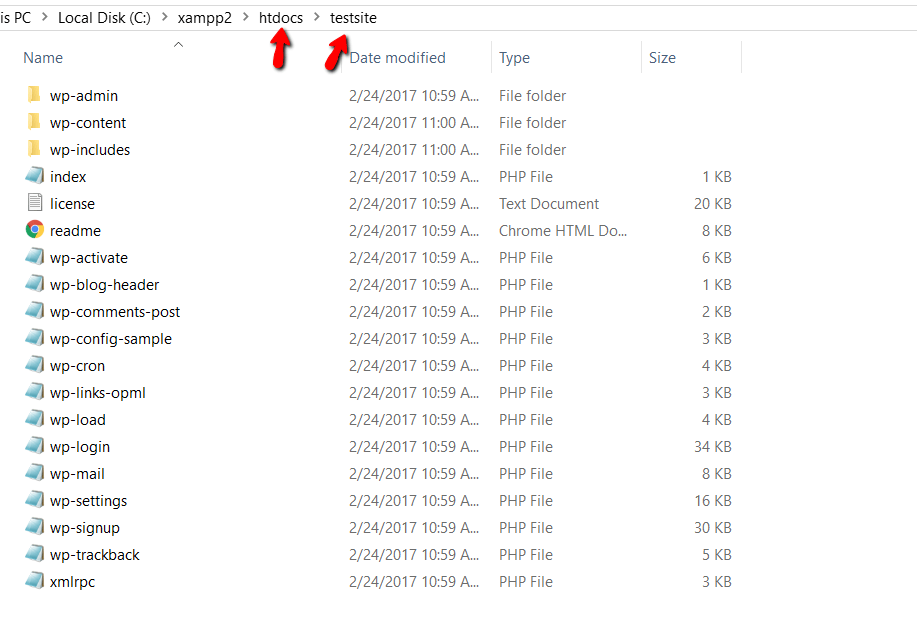
Step 4: Create a database for WordPress
Next, you need to create a MySQL database for your WordPress install. To do that, launch PHPMyAdmin from your XAMPP control panel:
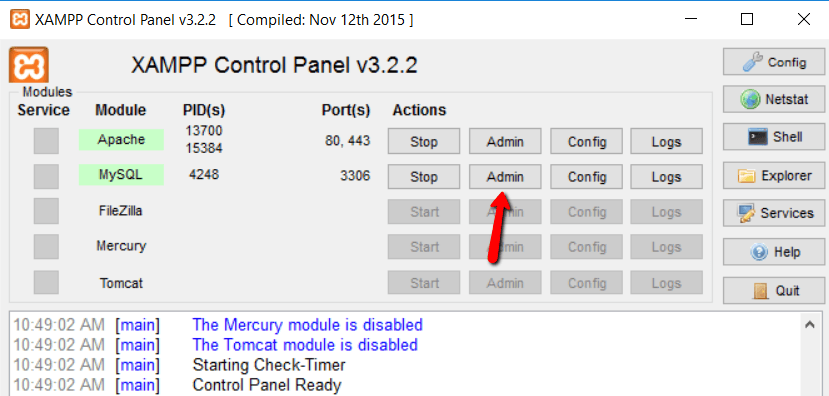
Then click on Databases at the top:
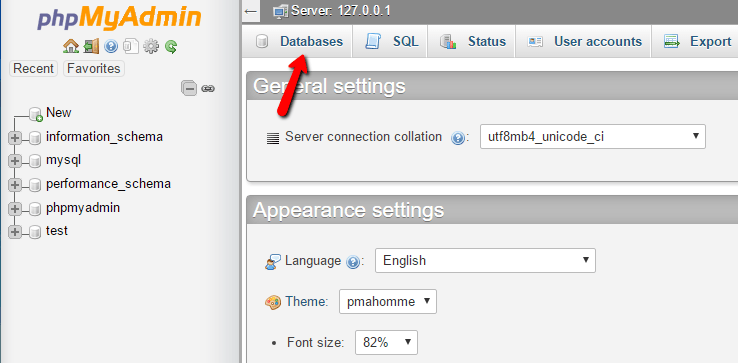
And enter a name for your database and click Create. Your name can be anything – just remember it because you'll need it for the next step:

Unlike installing WordPress on a live web server, when you install XAMPP and WordPress, you don't need to worry about creating a database user.
Step 5: Install WordPress locally via the on-screen installer
When you visit your test site, you should see the normal WordPress installer. Remember, your test site is just http://localhost/FOLDERNAME:

The only step where this process will differ from a normal install is the database details. When you get to the database details, enter them like this:
- Database Name = Name of the database you created in PHPMyAdmin
- Username = "root"
- Password = leave blank
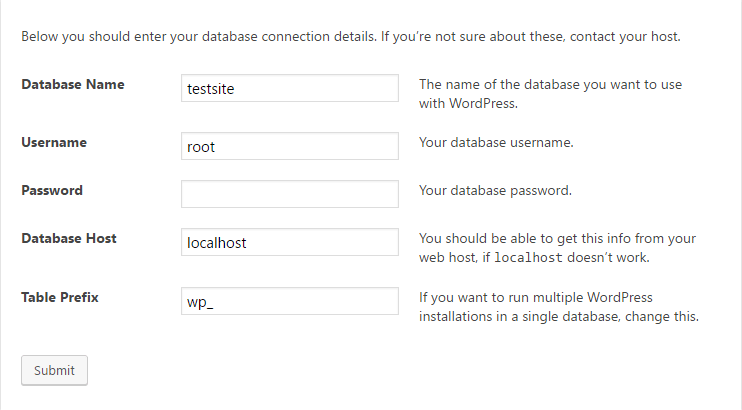
Then finish the rest of the WordPress install process like normal.
Once you complete the process, you should see your brand new WordPress install running perfectly on your local host:
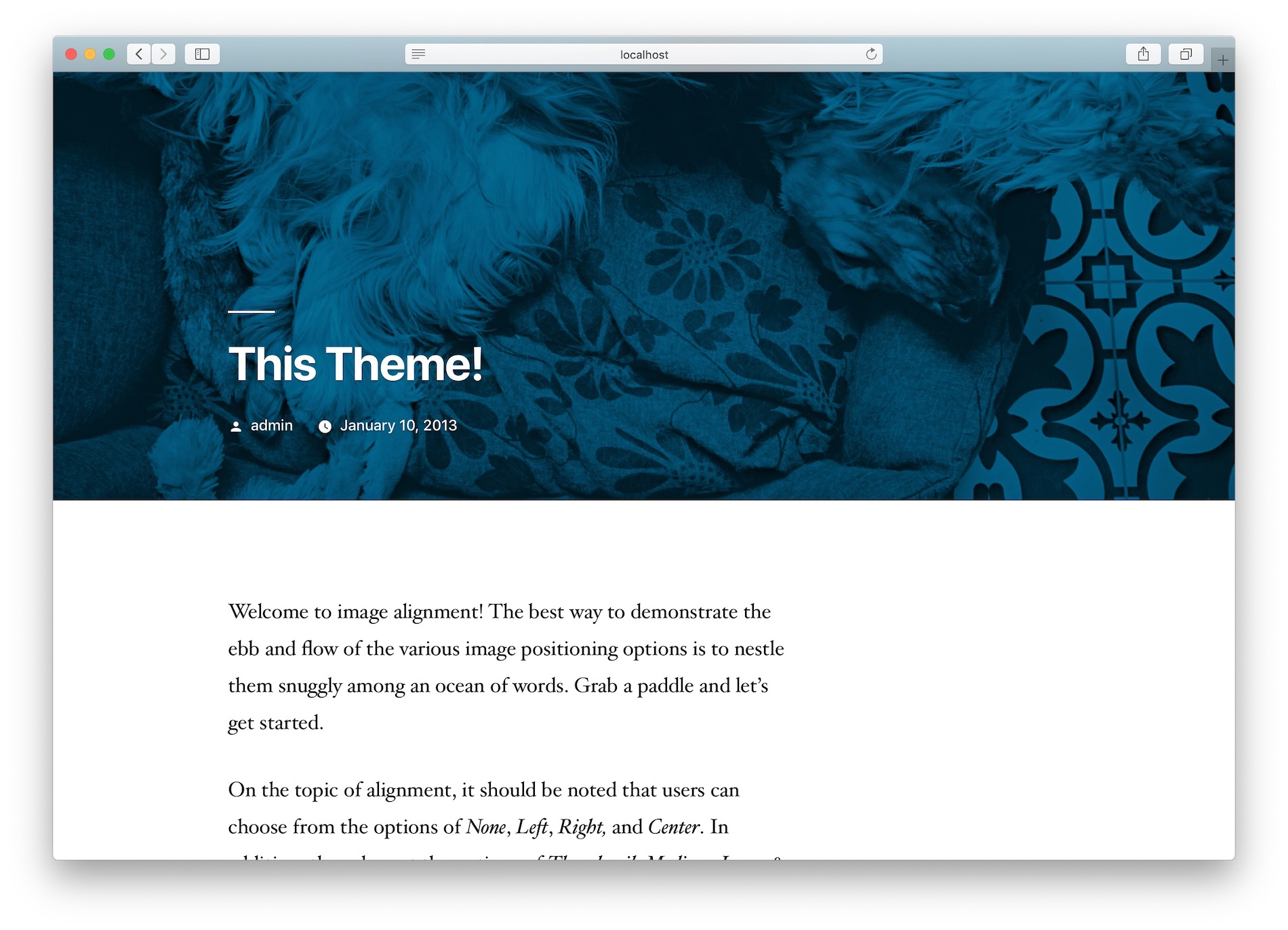
What about Multisite or staging?
How to install XAMPP and WordPress Multisite
If you want to play around with WordPress Multisite, it's also possible to configure WordPress Multisite to work on your local host. Rather than duplicating information, though, I'll just direct you to Vishnu's post on how to set up WordPress Multisite on a local host.
Should you use XAMPP and WordPress for staging?
While running WordPress on your localhost is a great way to experiment and try things with WordPress, you shouldn't use it as an actual staging site for a live site.
That's because it has a different hardware configuration than your live site. So just because something works or doesn't work on your XAMPP WordPress install doesn't mean it will be the same on your live production site.
Instead, using a subdomain or your host's staging service are much better ways to create a WordPress staging site.
Wrapping things up on how to install WordPress locally on XAMPP
Once you learn how to install XAMPP and WordPress the first time, you can quickly spin up new testing sites whenever needed.
As a freelance writer, I use XAMPP installs to review any number of themes and plugins. At this point, I probably have about 60 separate WordPress installs running on XAMPP. So if you need any assistance with XAMPP and WordPress, leave a comment and I'll try to help out!
What do you want to do with your site once you install WordPress locally? Feel free to share in the comments.
Free guide
5 Essential Tips to Speed Up
Your WordPress Site
Reduce your loading time by even 50-80%
just by following simple tips.
Download free guide
* This post contains affiliate links, which means that if you click on one of the product links and then purchase the product, we'll receive a commission. No worries though, you'll still pay the standard amount so there's no cost on your part.
How to Install Wordpress on Mac Using Xampp
Source: https://themeisle.com/blog/install-xampp-and-wordpress-locally/